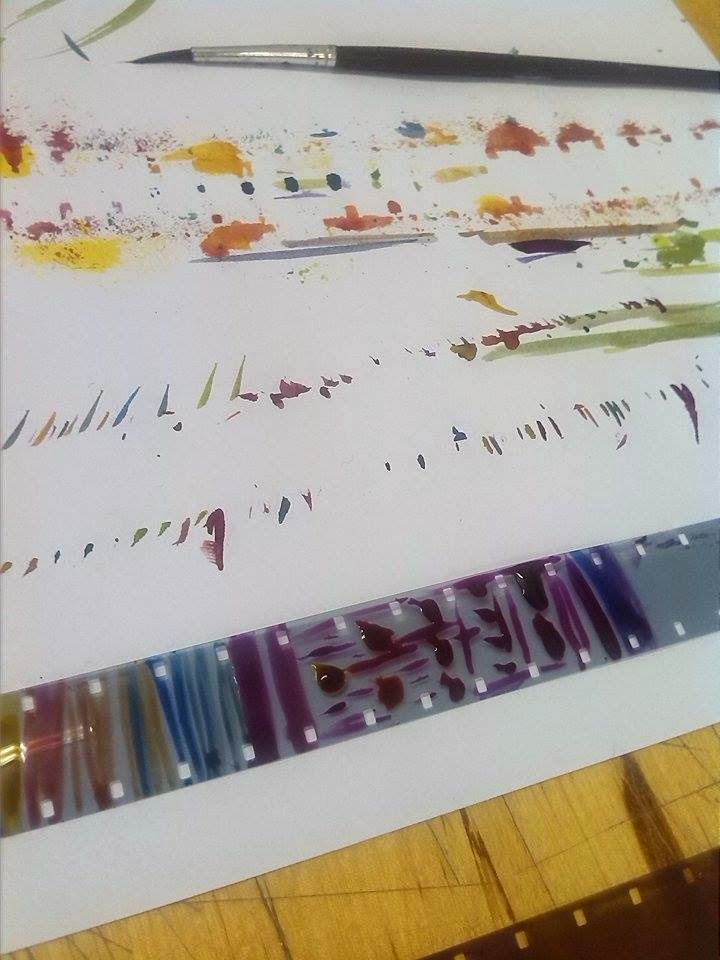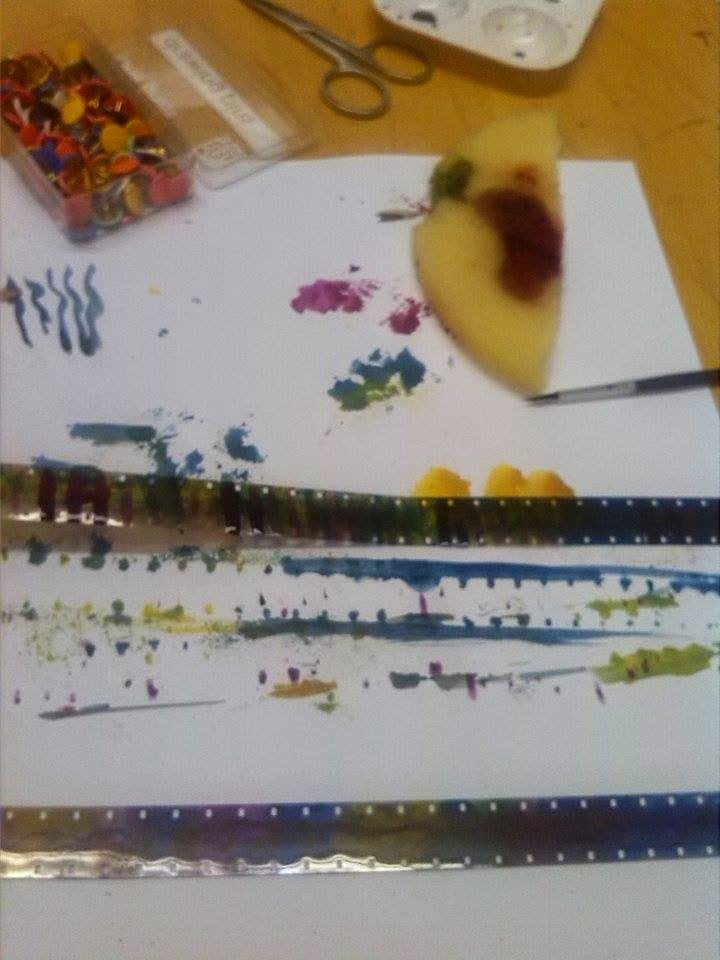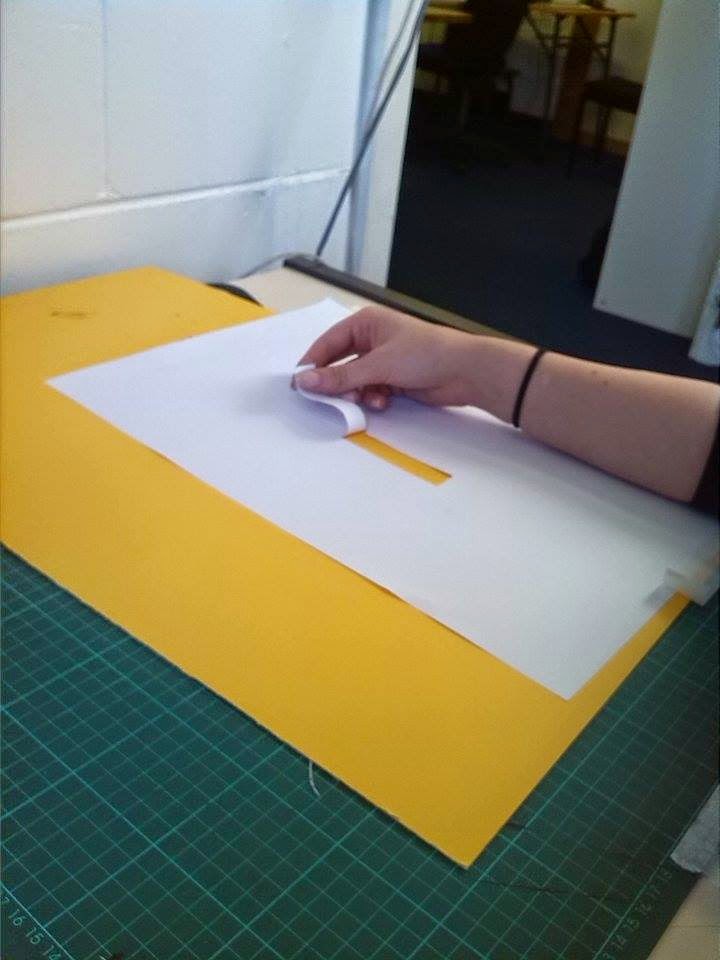Monday 8th September 2014
Seasons in Motion
After having made plenty of plans of ideas we could potentially undergo in the start of this project, we decided on the idea of a person being implicated by the seasons. Initially, we had the following main ideas, after having highlighted the most preferred:
- A person being bored in class, looking at his/her watch to in boredom, and skipping the hands forward an hour and the surrounding landscape changes around them.
- A person walking through a street and the landscape experiencing changes around them, seasons and weather changing constantly as they walk by.
- A fan covering a face of a person, and revealing alternate people as it moves along. Therefore including a variety of faces and roles.
- Writing our names in a variety of materials or the title 'Animate?' being presented as such.
 Throughout the planning of such ideas, we came to the conclusion that the idea of time travel that would be effective and is used in a lot of on screen films, would be too time consuming and intricate for the first step of the project, but we did like the idea of the surroundings changing around the person whilst the person was stationary.
Throughout the planning of such ideas, we came to the conclusion that the idea of time travel that would be effective and is used in a lot of on screen films, would be too time consuming and intricate for the first step of the project, but we did like the idea of the surroundings changing around the person whilst the person was stationary.
In contrast to this, we loved the idea of the changing faces, but decided that this didn't compare in interest to the intricate and more vibrant idea of changing seasons that really appealed to us all.
 After having studied Pixilation and using videos as sources of inspiration, we particularly liked the technique involved in 'Sorry I'm Late' by Tomas Mankovsky by using gravity as an advantage in filming by filming the main character lying down. Therefore we decided to have the subject as a female character that remains stationary as the seasons change around her (chosen female due to the interesting movements that could be captured through the hair) We decided on the following props for each season, all of which would be displayed on a set we prepared ourselves.
Before actually going to the studio to film the production of the Pixilation, we first of all planned out the set and the size of the actress involved by aligning the materials together on the floor, as a rehearsal for the studio filming. This allowed us to establish the proportions and positioning of certain props and their importance in the shots.
After having studied Pixilation and using videos as sources of inspiration, we particularly liked the technique involved in 'Sorry I'm Late' by Tomas Mankovsky by using gravity as an advantage in filming by filming the main character lying down. Therefore we decided to have the subject as a female character that remains stationary as the seasons change around her (chosen female due to the interesting movements that could be captured through the hair) We decided on the following props for each season, all of which would be displayed on a set we prepared ourselves.
Before actually going to the studio to film the production of the Pixilation, we first of all planned out the set and the size of the actress involved by aligning the materials together on the floor, as a rehearsal for the studio filming. This allowed us to establish the proportions and positioning of certain props and their importance in the shots.
Certain members of our team were left in charge of certain props, to collect the setting:
Rachel & I- In charge of looking for a fabric sky, needed to be a large scale, also some fabric for trees or the land to stand on.
Jamie & Steph- Went to the park to collect leaves and sticks for the construction of the tree.
Nayeem & Olivier- Collected aspects to represent the clouds, polystyrene and white materials.
Daniel & Sam- Made the sun and the rays out of yellow card, and some strands of rain if needed.
Spring-
-Sun made out of yellow card- cut out as a simple shape form to capture a simplistic element- Sun controlled by Daniel and Olivier during the shots of Spring, Summer and Autumn.
-Flowers- growing slowly out of the ground to show the growth of spring - Prop roles of the flowers shared amongst us all, but main roles included the lego flowers (which I controlled), and the surrounding flowers by Nayeem and Sam. Jamie controlled the tree and leaves in the breeze.
-Cloud- slowly moving over the sun and away- Controlled by Daniel and Olivier
-Birds- constructed with simplistic resources such as lego. Controlled by Steph, made to match the behaviour of real birds, fluttering around.
-Hair- I controlled to try to mimic a breeze and the nest in hair.
We wanted Spring to represent the growth and slight beginning of the seasons and the film, so the sun dwindling behind the clouds, and the flowers slowly growing from the undergrowth. We also wanted to represent such growth via the growing of the wildlife such as the birds, flying across the set and onto the tree, but in the meantime we liked the idea of making the birds interact with the character, thus, making Rachel's hair interact with the presence of the birds by making it into a nest. I liked how this idea embraced the true nature of Pixilation by achieving the impossible in terms of realism, and making abstract elements reality through stop motion. During each frame, I moved the strands of hair slowly, as if to mimic a slight breeze blowing past the character, which would then produce the desired bird nest design.
In order for the aspect of Spring to be captured, we wanted intricate details to be included, we decided to feature the birds flying above the character's head, with twigs to place in 'the nest' of her hair, in order to be quite cinematic, we allowed the actor (Rachel) to interact with the birds, with such behaviour as facial expressions (shocked, happy) and crouching, which allowed the actor to position her legs to appear she was crouching whilst stood up, trying to get away from the birds. Other features included her hoody being taken off from the actor, which also adds the beauty of Pixilation, making it look like she has special powers by removing it on its on accord. We assigned one person (which alternated per Season) to keep an eye on continuity, ensuring that everything was kept in frame that needed to be, and ensuring that the props were moving at the correct paces.
Summer-
-Sunglasses (a large proportioned pair for comical value) Controlled by Daniel and Sam, blutacked to the set at one point to defy gravity.
-Extra flowers (constructed from lego, as well as extra flower props) Flowers controlled by myself and Sam.
-Leaves- Controlled by Steph, and exit of birds also by Steph
-Hair- Controlled by myself
-Sun (same as used for spring, but movements more energetic for the Summer sunshine) Controlled by Olivier, whilst Daniel ensured continuity was withheld throughout.
-Sunhat- appears in frame Controlled by Nayeem and Sam.
-Leggings roll up by themselves. Controlled by Sam and myself.
 Summer is one of the most vibrant seasons, and we wanted the set and props to successfully represent this, such props as the sunhat and sunglasses were two main components of the Summer era we wanted to convey. We liked to combine some inspiration from the ideas we came up with at the start (one original idea where the faces of the actor change when their hands wipe across) so we decided that the actor in this Pixilation, should wipe her hands across her face to reveal the sunglasses underneath. This takes perfect advantage of the Pixilation process, and looks extremely effective in conclusion to this.
The transition of props was well thought out in this animation, we liked the idea of interpreting the wind into it from Spring, to carry the sunhat onto set, and onto the actor's head, I personally believe this was the right decision, as the whole impact was showing a development of the interaction of the weather and the textures that surround it. We also wanted to capture that Summer is quite suddenly upon you, so decided to make the little red lego flowers seem to pop out of nowhere, I was in charge of the lego flowers, adding them into every couple of shots, to make them appear to be popping out of nowhere. I also controlled the flowers, making them move across the screen and stay in place, and then scuttle off the frame over the character, giving them a lifelike image, almost impersonating an animal.
Summer is one of the most vibrant seasons, and we wanted the set and props to successfully represent this, such props as the sunhat and sunglasses were two main components of the Summer era we wanted to convey. We liked to combine some inspiration from the ideas we came up with at the start (one original idea where the faces of the actor change when their hands wipe across) so we decided that the actor in this Pixilation, should wipe her hands across her face to reveal the sunglasses underneath. This takes perfect advantage of the Pixilation process, and looks extremely effective in conclusion to this.
The transition of props was well thought out in this animation, we liked the idea of interpreting the wind into it from Spring, to carry the sunhat onto set, and onto the actor's head, I personally believe this was the right decision, as the whole impact was showing a development of the interaction of the weather and the textures that surround it. We also wanted to capture that Summer is quite suddenly upon you, so decided to make the little red lego flowers seem to pop out of nowhere, I was in charge of the lego flowers, adding them into every couple of shots, to make them appear to be popping out of nowhere. I also controlled the flowers, making them move across the screen and stay in place, and then scuttle off the frame over the character, giving them a lifelike image, almost impersonating an animal.
Autumn-
-Coat- to convey the sudden appearance of cold weather-
Added onto character by Sam
-Sun- lower sun rays, shows dwelling of the sunshine-
Controlled by Daniel and Olivier
-Leaves- slowly falling off the trees, dead leaves collected earlier added. -
Controlled by Steph and Jamie
-Umbrella- to end shot and blow into frame-
Controlled by Nayeem and Sam

-Hair- In a wild breeze to show the cold air -
Controlled by myself and Sam
-Cloud- Still coming in to represent the rainclouds-
Controlled by Jamie and Olivier
Autumn was the last Season we had time to do in the end, but the original plan worked out in the fact that there was an element of clouds and rain, with the umbrella swirling into the camera to end the scene. The coat wraps around the Rachel as she gets cold (again expressing this in a very theatrical way) and then along comes the breeze, effectively whipping the umbrella into scene, and eventually out of the frame and outwards towards the camera, producing an alternate dimension to the piece.
I think a key element of this Season was the breeze added effectively, through the melodic movement of the trees and hair of Rachel, that makes it appear to contain weather and the gravity of Rachel stood up instead of lying down.
Winter-
-Coat
-Hat
-Scarf
-Snow
-Clouds
We were planning to produce the final season, but we didn't have time to compose the whole thing, the idea would have been for the umbrella from the Autumn scene to hide the change in scenery through Pixilation, and reveal a snowy scene underneath, with hat and scarf to join with the overall effect. However, even though we didn't manage to complete the final season, I believe it was still a successful outcome, and a thorough experiment into our first attempt at Pixilation.
Our final outcome-
First day on the course! from
BA (Hons) Motion Design on
Vimeo.
Monday 15th September 2014
Let's Title- 'Animate?'
As a second part in trying to experiment with Pixilation, we decided to as a group produce a series of letters that make up the title sequence 'Animate?' each being given a letter to produce and a way in which to produce it. We liked the aspect of the material to appear to be coming out of the finger of the person involved, through the aspect of Pixilation. To begin with, we were going to produce a composition including our own names, but realised ultimately this would be too time consuming, and it would be more texturally effective to experiment with alternate compositions of letters. We considered the following materials, (chosen ones highlighted below) :
- Nails in wood
- Masking Tape
- Pencil/Pen drawing with finger
- Plastercine
- Taking a letter from an existing object and placing it on an existing page. (Grabbing a letter from someone's t-shirt and placing it on a page from it)
- String
- Cutting a letter out of paper with a scalpel and placing it on a page.
- Paint splatters
- Staples coming from the point of the fingers
- Snake (the game) characters being captured
We decided that the best way to construct these letters together was to have a letter each, we sectioned these out into a group chat.
A- Sam - Drawing
N- Rachel - Cutting
I- Nayeem - Plastercine (snake idea)
M- Olivier - Nails in wood
A- Me - Tape
T- Steph - Staples
E- Daniel - Taking a letter from an existing object
?- Jamie - String
Rachel & I sectioned off into a pair to assist each other's pieces. Rachel was concentrating on an 'n', cutting it out into paper, with a coloured card lay underneath to reveal when it's cut out.

She used a cutting mat, scalpel, yellow coloured card, and paper alongside the technology of the iStop Motion programme to film the piece. First of all, she mapped out a template of the letter lightly in pencil, we placed the lighting equipment onto the page so that the template that Rachel was working from was virtually invisible on camera, thus, allowing Rachel's cut out pixilation to work accurately and professionally.
Lining up the piece of paper to the camera accordingly, we began filming the piece, her slowly cutting out the letter bit by bit, and placing her finger to appear to be cutting the paper itself. The power of pixilation made the slow process of cutting out and applying her hand back on top to capture the frame, became a smooth transition of an animation.

We plan to edit the pieces together in order to produce the title sequence 'Animate?' So we exported the file onto a USB and continued with my letter.
For my tape letter of an 'A', we decided that the letter and material used for it required a bigger piece of paper, so I used an A1 piece of card, and drew on the template around it. Due to previous testing, we decided that the best thing to do would be to use red electrical tape, as this proved to be the best and camera in comparison to such materials like masking tape. Setting the camera facing downwards facing the floor, we decided to include part of my head and hands in set, as it added some character to the Pixilation and decided it looked quite effective. Measuring up some prototypes of the letter beforehand in my Sketchbook ensured that the tape was used in an effective way. I decided to slightly crumple the tape as I pressed it down, as well as ensuring the edges were still crisp and neat. Again, we then intended to use this in the title sequence, so exported it on USB for the animation editing later next week.
This is the overall title sequence with the featured Seasons in Pixilation.









































